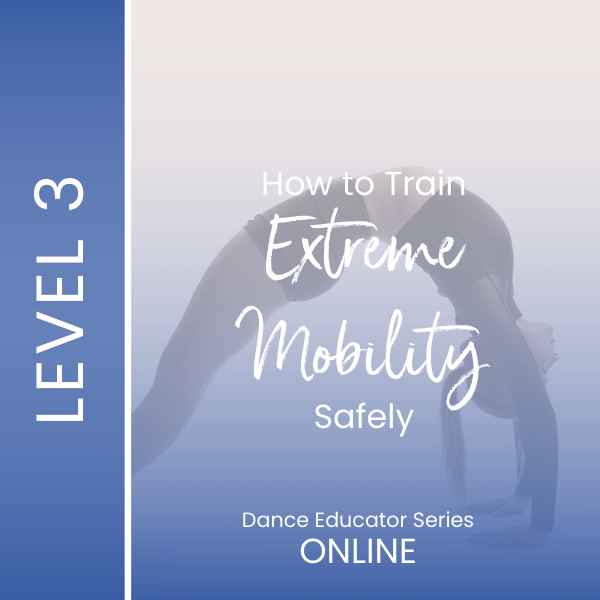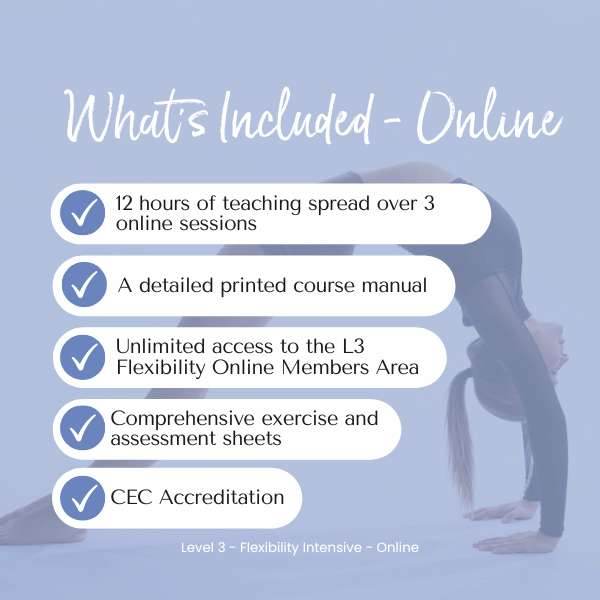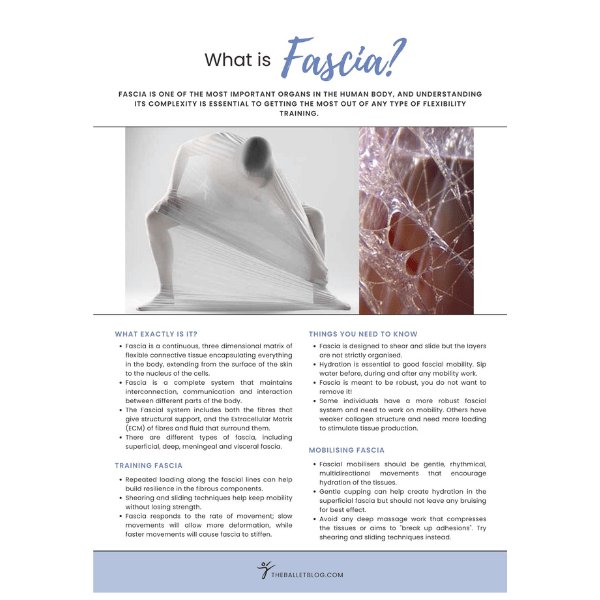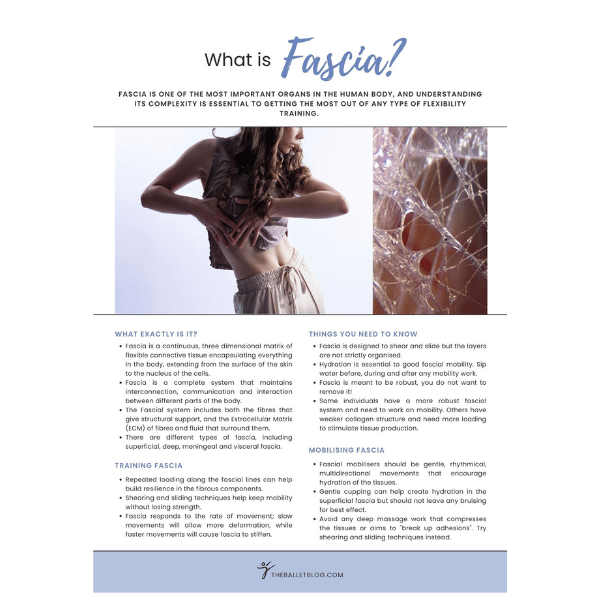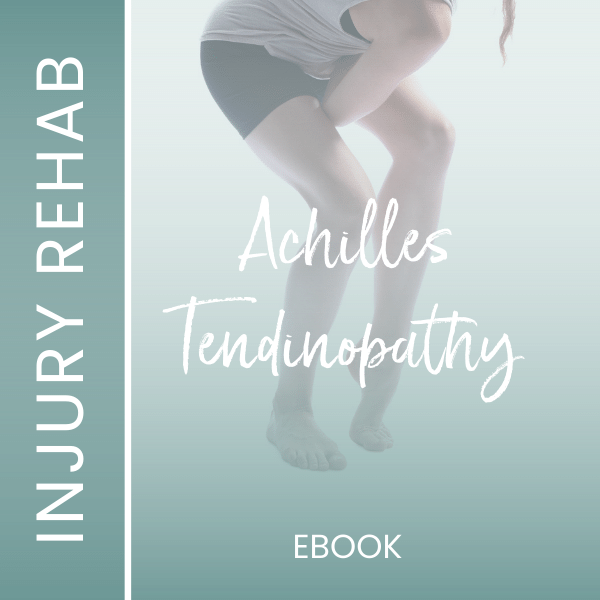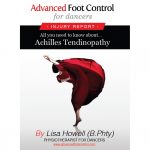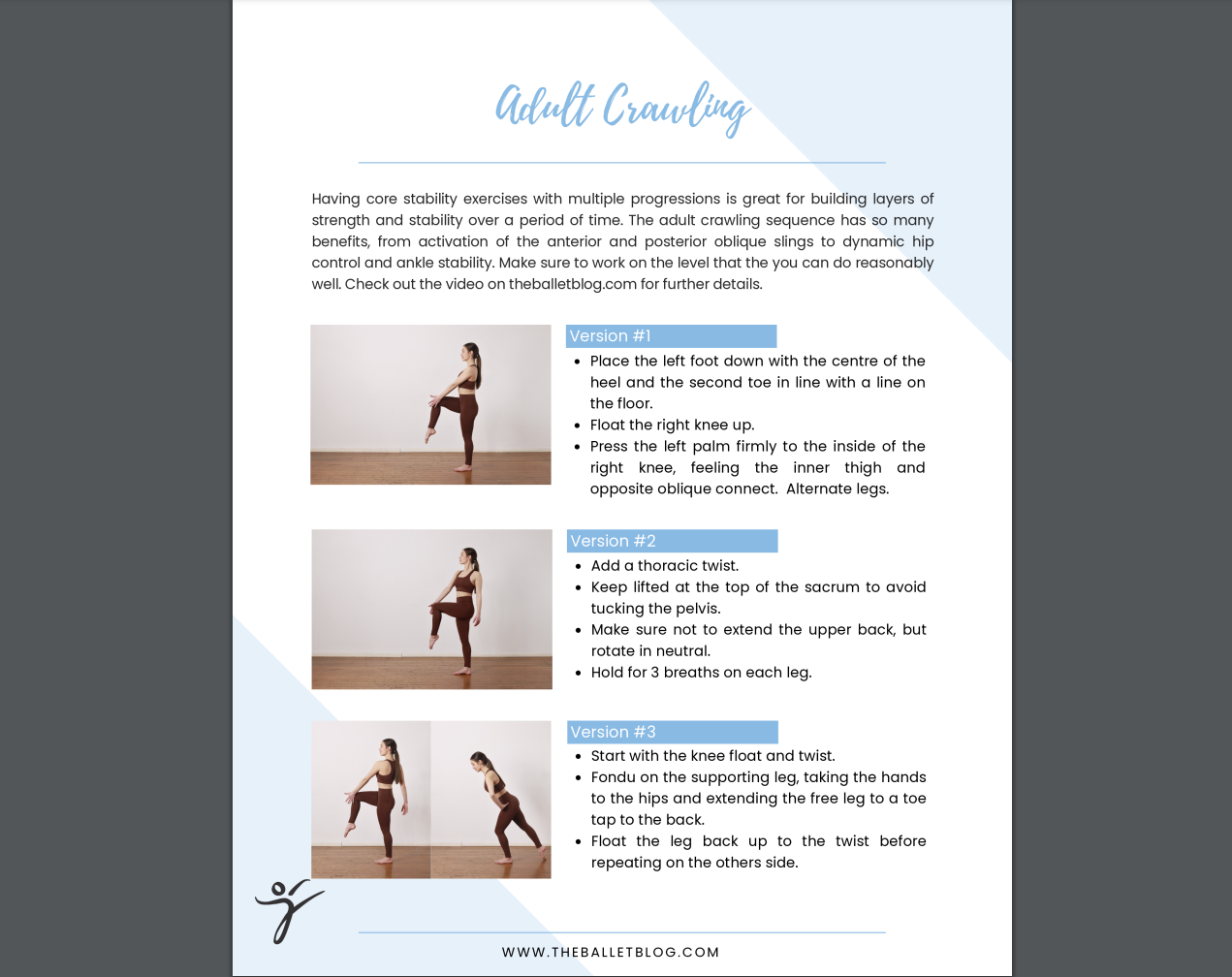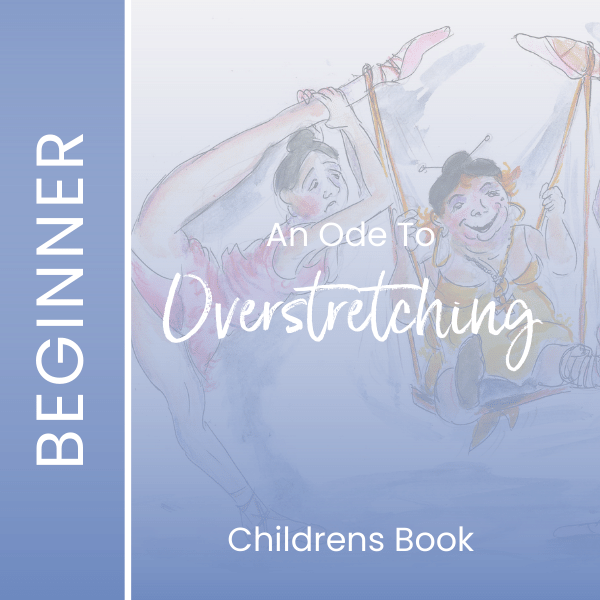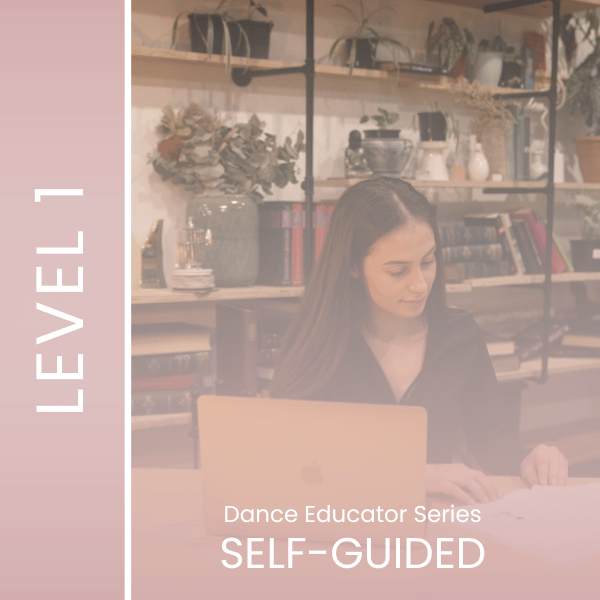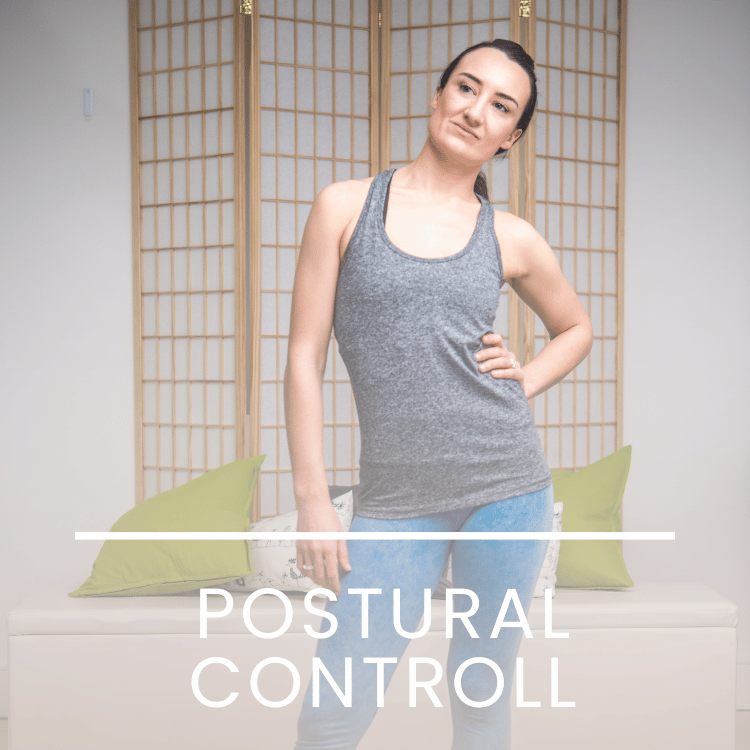- Free Articles
- Shop
- Workshops
- The Dance Educator Series
- Upcoming Workshops
- Workshop FAQ’s
- Host Application Form
- Student Workshop Application Form
- Dance Teacher & Health Professional Directory
- Workshop Testimonials
- Members Areas
- Cart
- My Account
Level 3 – Flexibility Intensive – Starting 9th October 2023
$400.00
- Price displayed in AUD
- $400 AUD is approximately equal to $270 USD
- Please check xe.com to convert to your local currency or check daily currency conversion
- Price displayed excludes GST (Applies to Australian residents only)
If you are familiar with the content in the Level 2 Flexibility Intensive, this is a perfect opportunity to advance on this understanding and apply the philosophies to higher level training. If you have not yet completed the Level 2 Flexibility Intensive, you may do this via our new self guided option.
- Dates:
- The timing of this workshop makes it perfect for the following locations: NZ, Australia, The Americas & Canada.
To check the exact times in your location CLICK HERE
- The timing of this workshop makes it perfect for the following locations: NZ, Australia, The Americas & Canada.
Sydney, Australia (AEDT):
-
- Call #1: Monday 9th October, 2023 – 8am – 12.30pm
- Call #2: Monday 16th October 2023 – 8am – 12.30pm
- Call #3: Monday 23rd October 2023 – 8am – 12.30pm
New York, USA (EDT):
-
- Call #1: Sunday 8th October 2023 – 5pm – 9.30pm
- Call #2: Sunday 15th October 2023 – 5pm – 9.30pm
- Call #3: Sunday 22nd October 2023 – 5pm – 9.30pm
By ticking this box, I understand that any of the material gained from these workshops can exclusively be used for the educational purposes of my teaching. Redistribution of this material, either electronically or physically, is not allowed as well as dissemination of the information within these courses for personal profit.
*Please click here to view our cancellation policy before completing your purchase.
14 in stock
Level 3 Flexibility Intensive – ‘How to Train Extreme Mobility Safely’
- What’s included:
- 12 hours of teaching spread over 3 Live Zoom Workshops: To replicate the depth of learning and personal connection we feel at the in-person course, the content will be delivered in a combination of live teaching, pre-recorded content and personal exploration.
- Personalised Attention: These calls will be limited to just 22 individuals so that you will have plenty of time to ask questions.
- A comprehensive set of assessment sheets: These sheets make any future flexibility assessments easy to conduct, and to share with your colleagues.
- Access to recordings of the virtual workshop: After the workshop you will be given three months access to the recordings of the virtual sessions, giving you the opportunity to go over any particular part of the course in your own time.
- Access to the Members Area: You will also be given access to the Level Three Flexibility Intensive members area, which includes over 100+ pre-recorded videos and downloadable PDF’s.
- 12 hours of CEC Accreditation: After this workshop you will be emailed the CEC Accreditation Application Form, which is designed as an overview of the online course in order for you to appropriately claim CEC credits with your governing body for 12 contact hours of education.
Level 3 Flexibility Intensive - Online Virtual Workshop
Many dance teachers are concerned at the safety of their students who are working into the extreme positions require by some current choreography. They want to keep their students safe, yet do not want to hold their dancers back from suceeding in this ever competative world. While some young dancers struggle with their range constantly, others have excessive natural range, and will often perform "tricks" that make most adults squirm. How do you train this extreme mobility safely?
This intensive teacher training workshop with Lisa Howell will answer questions such as:
- Is there a way of overstretching safely?
- How can we train the level of mobility required in elite level choreography safely?
- In students who have amazing natural range, how do I ensure they stay safe?
- How can we train deeper back extensions without risk of stress fractures or spondylolisthesis?
- Why do students with a flexible back often lose their mobility as they get older?
- Why do some students with Hypermobilie joints still struggle with their flexibility?
- Should we avoid stretching in Hypermobile students?
- I know that repeatedly cracking a joint is bad, but how do you help students reduce the need to crack when they feel like they must do it to get full range?
Please do not worry if you struggle with your own mobility!
We will have several student models as well as the course presenter to demonstrate some of the higher level elements so you will not feel obliged to perform any movement that is not part of your normal repertoire. However, many teachers are delighted at just how much they effortlessly improve their mobility during the course!
Aims of the course:
- Increase the awareness of the multifactorial nature to flexibility training, that everyone is different, and may require different training techniques at different periods of time
- Educate dance teachers and therapists that the traditional methods of pushing into restriction is often not the most effective way to improve, and in some cases may be counter productive
- Explore safe way of assessing exactly where each individual is restricted in order to create the most effective program.
- Learn safe ways of mobilising these restrictions to create more mobility.
- Understand why these areas of tension build up in the first place, and how subtle changes to how we sit, stand and walk can make an enormous difference to our flexibility
- Help teachers manage the flexibility of adolescents safely through growth-spurts

This workshop will help you assess your students in detail and be able to offer them effective techniques in a logical clear order to get them on the way to achieving THEIR optimal flexibility. It is also for teachers who are concerned at the extreme positions young dancers are wanting to work into, as it gives you safe guidelines on how to guide their development.
New Online Virtual Workshop Format
The original workshop has been divided into three 4 hour sessions to allow optimal understanding of all of the content via an online virtual workshop format.
To replicate the depth of learning and personal connection we feel at the in-person course, the content is delivered via a combination of live teaching, pre-recorded video content and personal exploration. While you do not need to have a student model with your during the course, we highly advise planning to practice each days content on a model after the call finishes. After the workshop you will also be given unlimited access to the recording of the calls, giving the opportunity to go over any particular parts of the course in your own time.
Call #1
(4 hours)
Introduction - We spend the first few minutes inviting attendees to introduce themselves and give a brief background of their training and vocational focus. Developing a community of like minded professionals is extremely important at this level.
Assessing Each Position - We look at how to assess common positions such as the front splits, over-splits, bridge, wheel and scorpion pose to analyse the true restrictions for each individual and the best options for improving their range safely.
Components Required for an Effective Walkover - We use the 'simple' walk-over as an example of how to create a pre-screening protocol for specific steps that may be dangerous if attempted too early. This process gives attendees an instantly applicable screening protocol to use in their studios and a template for creating additional ones as needed for their specific requirements.

Call #2
(4 hours)
Assessing Hip Extension - We review some of the hip assessment techniques from level 1 course, along with some new ones, to look at the mobility of the hip, but also it's stability in extension. Keeping the hip centralised in the hip socket is essential in preventing injuries to the front of the hip.
Improving Hip Extension - We respect the Order of Priority in exploring ways to improve hip extension safely in all individuals. We then use the structured sequence of Mobilise, Isolate, Integrate & Function to create carefully planned sequences of exercises to improve optimal control of the hip in extension.
Assessing Spinal Mobility - This section looks at assessing the spine in multiple situations, from low grade passive testing to high level sports specific assessment. This allows us to tailor the conditioning program for each performer to their own specific needs for maximal efficiency and effectiveness.
Safely Improving Spinal Mobility - Respecting to order of priority can create dramatic improvements in range of motion in the spine. The follow up sequences of deep stability work coupled with higher level exercises ensures the spine is protected as performers begin to deepen their practice.
Curating a Program - We work through the specially designed sample programs to help you gain confidence in curating a customised program for each individual. Sample programs and templates do most of the work for you in applying the work directly to your students.
Call #3
(4 hours)
Assessing 'Hamstring' Mobility - This section covers assessing the functional mobility down the back of the legs, and how to determine whether this restriction is neural, fascial or muscular.
Improving 'Hamstring' Mobility - Dramatic changes in range can be achieved quickly and maintained for longer by applying the carefully curated exercises in this section. Careful training and loading of the hamstrings also guards against high hamstring tears which are common in performance artists.
Assessing Shoulder Mobility & Control - Adequate mobility and control in the shoulder complex makes a huge impact on a performance artists' ability to execute many steps. Careful assessment can uncover many hidden restrictions that are blocking progress in higher level training.
Improving Shoulder Mobility and Control - This detailed look at safely improving range in each structure empowers teachers with well-needed information that is rarely included in teacher training courses. Stsability work is carefully graded to allow development of effective patterns to support the performer in more dynamic, loaded work.
Question Time - Due to the depth of content covered in this intensive teacher training course, we make sure to leave time to cover additional questions and clarification in this final call. The aim is to have you leaving confident in applying the work immediately
The course includes a fully illustrated colour manual, along with assessment sheets and a student workbook to allow ease of application in the studio. The extreme positions discussed in the manual are delightfully illustrated by Mike Howell, Lisa's Dad, allowing us to look at the issues surround each one in detail, without harming any more young dancers!
The following videos give a review of some of the relevant information from the Level 1 and Level 2 Teacher Training courses, to review before attending the Level 3 Flexibility Intensive
Is Over-Stretching Bad?
Why do hypermobile people get more pain?
Flexibility Training in Hypermobility
Completing the Level One Teacher Training and the Level 2 Flexibility Intensive is highly recommended prior to attending this Level 3 course. If you have yet to attend the Level One Training you may sign up to our Level One Online Teacher Training Portal prior to the workshop going ahead. For further information about this, please contact us on workshops@theballetblog.com.
-

 This product has multiple variants. The options may be chosen on the product page
This product has multiple variants. The options may be chosen on the product pagePerfect Form – Unisex Heavy Blend™ Full Zip Hooded Sweatshirt
$50.00 -

 This product has multiple variants. The options may be chosen on the product page
This product has multiple variants. The options may be chosen on the product pageYes, I’m a dancer – Quote Tee
$35.00
Join The Ballet Blog
and get access to over 100 free articles & 10% off your first order!
We promise not to clutter your inbox – but we will send you our latest tips, videos and promotions.

